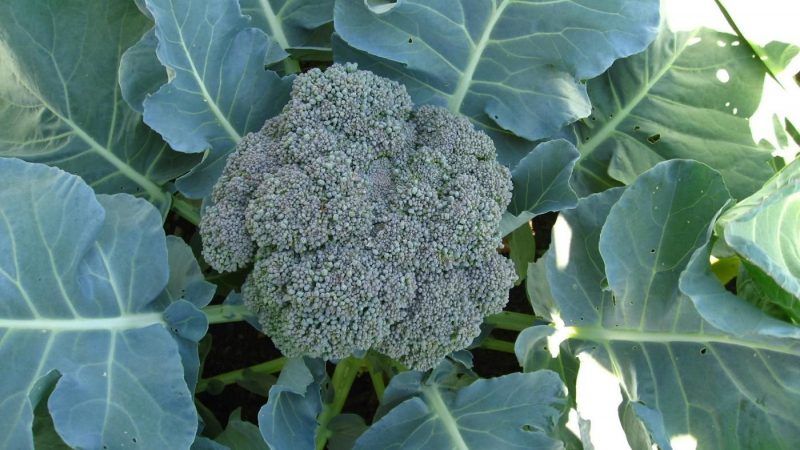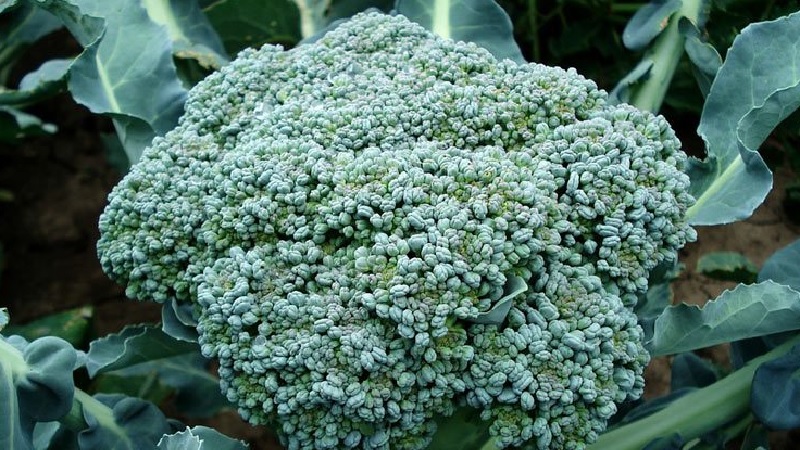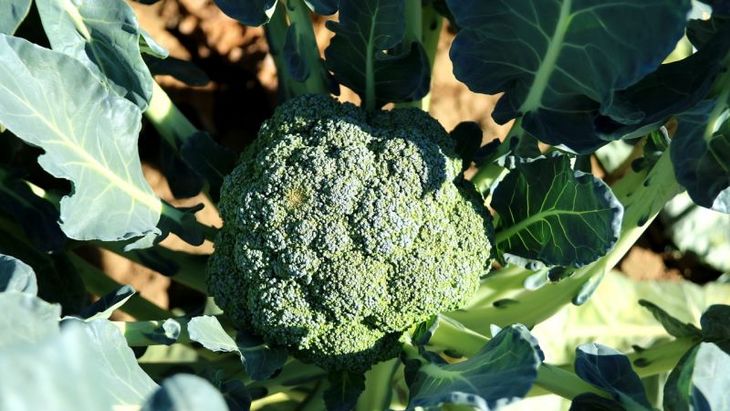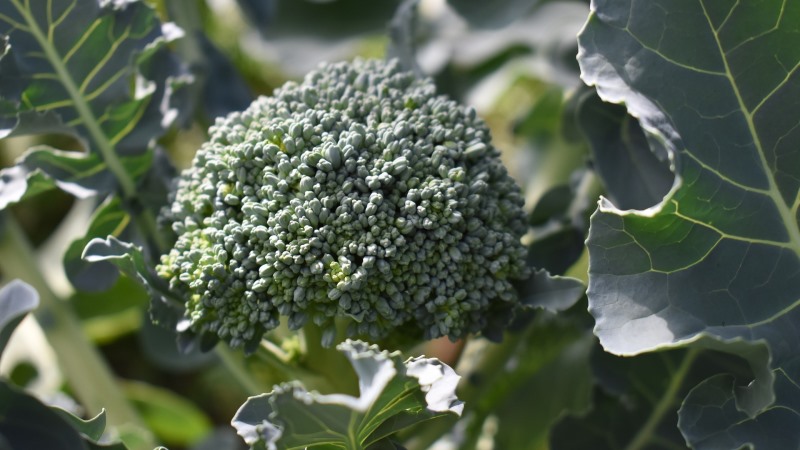The best varieties and hybrids of broccoli cabbage for Siberia and features of their cultivation
Broccoli has become popular for its high content of minerals, vitamins, fiber and delicate taste. The unpretentious culture is resistant to cold weather, so its varieties and hybrids are grown until the very frost. Even the natural conditions of cold Siberia do not affect the plant's ability to grow and develop the heads of cabbage normally. We will tell you about the best varieties of broccoli for growing in open ground and greenhouses in Siberia, according to the reviews of experienced gardeners.
The content of the article
The best varieties and hybrids of broccoli cabbage for Siberia
For cultivation in the northern regions of Russia, there are varieties and hybrids that ripen early are not afraid of the cold and do not require special care.
For open ground

For planting in a personal plot in a cold area, varieties and hybrids are chosen with a minimum ripening period - early and mid-season broccoli. The varieties are distinguished by excellent taste, the suitability of the seed material for the subsequent reproduction of the crop, but ripen longer. The hybrids on the packaging are marked with F1. They are good in that they give high yields, are resistant to pests, are stored without losing their presentation and nutrients. However, the taste of hybrid broccoli is inferior to varietal, and the seeds are not suitable for planting.
When planning to plant a crop in unprotected soil, the following varieties and hybrids are chosen.
Lazarus
Cabbage of this variety has very early ripening periods. The period from planting to the formation of large and dense heads of cabbage is 70 days.
Broccoli F1
The hybrid is characterized by an average density of rich green heads, as well as the ability to store for several months, while maintaining taste.
Tone
The crop is ready for harvest in 2.5 months. The central head of cabbage weighs about 200 g, and the lateral inflorescences - 70 g each. Their color is dark green, delicate taste resembles young canned peas.
Linda
From germination to maturity of the heads, 85-90 days pass. The leaves are small in size, gray-green in color, bubbly, with wavy edges and a thin waxy coating. Heads of cabbage are dark green, rounded, weighing 300-500 g. Instead of cut, 6-8 small heads from 50 to 70 g are formed. The variety is characterized by high productivity and resistance to diseases.
The emperor
The growing season to full ripeness lasts about 80 days. The heads have an interesting appearance: the inflorescences are dark green, grow in the form of fir trees and have a conical shape. Average weight - 400 g.
For growing in a greenhouse
In Siberian natural conditions, broccoli grows well in greenhouses and greenhouses. This method of cultivation makes it possible to obtain a harvest of cabbage with medium and late ripening periods and keeping quality for more than 2 months.
Below are the varieties and hybrids of Siberian cabbage, suitable for growing under cover.

Lucky F1
A high-yielding, early-maturing, disease-resistant broccoli hybrid whose heads grow to a significant weight of 900 g. The crop ripens in 70 days from the moment of planting.
Continental
Forms heads of cabbage weighing almost 600 g. Rounded heads have a pleasant taste, tolerate transportation. When cutting the main head of cabbage, 4 new ones are formed.
Marathon F1
Resistant to low temperatures, has a high yield - 3.5 kg per plant.The growing season of shoots is approximately 80 days after the germinated seeds are laid in the ground. Heads of cabbage grow up to 1 kg in weight. The vegetable tastes good, especially when pickled.
Calabrese
The culture forms a dense turquoise head weighing about 400 g. Cabbage is resistant to frost and unfavorable weather conditions.
Arcadia
Heads of cabbage are harvested 3.5 months after sprouting. The head is bumpy, weighs about 0.5 kg, the mass of the lateral ones reaches 70 g.
Monterey F1
Medium-late yielding hybrid, giving heads of cabbage by 1.5 kg. The central head of cabbage of dark green color is formed by side forks. In the greenhouse, it is important to monitor the temperature and humidity of the air.
Early varieties

Breeders have developed many early varieties and hybrids of broccoli for cultivation in the northern regions of Russia. They are characterized by resistance to cold weather and undemanding maintenance.
The short growing season makes it possible to harvest the crop long before the arrival of frost. From sowing seedlings 2-3 months pass to maturity. Early varieties of broccoli have a short shelf life, so they are often used fresh, sometimes frozen and canned.
We offer an overview of early broccoli varieties suitable for the Siberian climate.
Sedek
One of the earliest ripening varieties that ripens in 70 days. He is more often than others chosen by gardeners for cultivation in harsh weather conditions.
Lord F1
Very tasty and high-yielding cabbage. Sowing for seedlings is performed from mid-March, in the second decade of April, cabbage is planted in the ground. The head of cabbage acquires maturity 2 months after disembarkation. Lateral inflorescences weighing 150-200 g are formed until late autumn. About 4 kg of vegetables are obtained from 1 m².
Green Magic F1
The early ripening hybrid was bred by French breeders who endowed the cabbage with excellent taste. The growth period from germination to ripe head of cabbage lasts 2-2.5 months for seedlings and 1-2 weeks longer for direct sowing into the soil. The head is large, domed, of medium density, weighing 500-700 g. The leaves are gray-green. The hybrid possesses remontant properties, resistance to diseases and pests. From 1 m² collect up to 2.2 kg.
Mid-season
The medium-ripening cabbage crop is removed approximately 105-130 days after sowing the crop for seedlings... For a favorable vegetation, it requires not only a longer time, but also a high temperature - at least + 20 ° C. The cooler the summer, the slower the vegetable grows. In this regard, in the cold regions of Siberia, mid-season broccoli is more efficient to grow in greenhouses. Most often, gardeners choose the following varieties and hybrids.
Ironman F1
High yield hybrid. Leaves and head of cabbage blue-green color. The head is dome-shaped, medium-sized, dense, weighing about 500 g. Leaves are medium-sized, gray-green, bubbly, with a wavy edge. From planting seedlings to full maturation of the first heads of cabbage, it takes about 80 days. Provides secondary heads. Up to 3 kg of harvest is harvested from 1 m². The hybrid is used fresh and for freezing.
Gnome
The variety is characterized by small, fine-grained, green elliptical heads with a gray tint. The mass of a head of cabbage reaches 550-600 g. Full ripening occurs in 2.5 months from the day the seedlings are planted in the soil. The yield is 3-4 kg / m². The variety is suitable for fresh storage and canning.
Batavia F1
From germination to setting heads of cabbage, 90-95 days pass. Cabbage has dense green leaves of gray shade with wavy edges. The head has the shape of a ball, even or bumpy, dense, weighs 500-700 g. It gives a lot of secondary heads, the size of which depends on the agronomic conditions. The heads of cabbage fully ripen in 2 months from the moment the seedlings are planted.
Important! The advantage of these varieties and hybrids is a longer storage period than the earlier ones.
Late varieties

In Siberia, late-ripening varieties are planted in protected ground.It takes 130-145 days to form and ripen heads from sowing seedlings to technical ripeness. But this expectation of the harvest is compensated by the long fresh storage period. Late cabbage is used for freezing and preservation for the winter.
The following varieties and hybrids are popular.
Miranda
A head of cabbage is formed from large unusual purple inflorescences, its average weight is about 1 kg. The average late ripening period is 95-105 days after planting the seedlings in the soil. It is applied for cooking salads, side dishes, boiled or fried. The yield of the variety is 2.5-4 kg / m².
Parthenon F1
Cabbage grows in one stem up to a meter in height, a vertical rosette forms on it. Domed head, flattened and smooth, high density, medium to large in size with a turquoise tint. The weight of the main inflorescence is up to 900 g. When good conditions are created (sparse planting scheme, timely watering, top dressing), it forms lateral inflorescences in moderate quantities. Parthenon gives up to 3.3 kg of yield from 1 m². Suitable for fresh use, freezing and short-term storage in the refrigerator.
Monopoles F1
A yielding (3.1 kg / m²) hybrid of Dutch selection is able to form secondary heads. The mass of the central head of cabbage is 600 g.
Features of growing broccoli in Siberia
If many varieties of broccoli and their hybrids (more than 200 species) are suitable for central Russia, then when cultivating cabbage at low temperatures, varieties with minimum ripening times are needed. Late ones do not have time to grow and fully mature. The long growing season leads the plant to death at the first frost.
Attention! A site for cultivating broccoli is chosen after cereals, tomatoes, potatoes, onions, but not after cabbage, otherwise a high yield will not be achieved.
Seedling on Siberian lands, several harvests are obtained per season if the biomaterial is planted with an interval of 2 weeks. After the cabbage seedlings reach a height of 10-15 cm and at least 5 leaves appear on small green stems, they are transferred to open ground. Seedlings no more than 7 weeks old in open ground are planted in April. Overgrown shoots will subsequently bring a poor-quality crop - the heads of cabbage will grow small.
In the Siberian region, broccoli gained popularity with the spread of polycarbonate, film, glass greenhouses. It is not picky about high ambient temperatures - + 7 ... + 10 ° C is enough for full growth. This temperature is maintained in heated greenhouses even at the end of April.
Conclusion
Despite the fact that short summers with low temperatures prevail in Siberia, broccoli is suitable for such natural conditions. Early varieties are most acceptable for growing in cold areas in the open field, and mid-season and late ones are grown in greenhouse conditions.